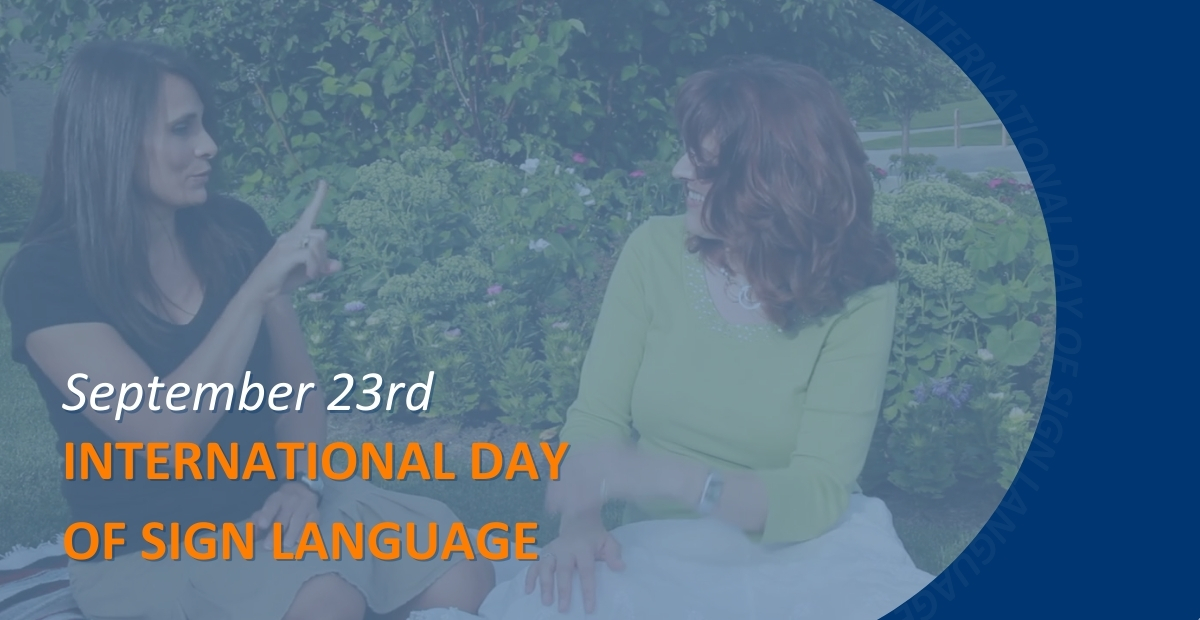OVERVIEW
International Day of Sign Languages is celebrated every year on September 23rd to recognize this kind of communication as an essential tool for inclusion and human rights, highlighting the importance of linguistic identity and cultural diversity within all Deaf communities around the world.
It was established in 2018 by the United Nations to remind everyone of the importance of the need for an equal access to information and communication while advocating for policies that protect and promote every kind of sign languages, because expressing ourselves isn’t a privilege, but a right.
Sign languages are fully recognized natural languages with their own grammar, vocabulary and regional variations, but are often overlooked or under-supported in education, public services and media.

HISTORY – TIMELINE

5 FACTS ABOUT SIGN LANGUAGE
FOURTH MOST USED LANGUAGE IN THE U.K. – Over 125 thousand adults in the United Kingdom use British Sign Language, the primary language of 15 thousand individuals in England and Wales.
DIFFERENT COUNTRIES HAVE THEIR OWN VERSIONS – Despite the fact that both the U.K. and the United States speak English, their sign languages are extremely different due to the fact that there are regional differences similar to how accents and dialect are represented in speech.
IT USES MORE THAN JUST HAND GESTURES – British Sign Language, in addition to those signs made by hand gestures also uses facial expressions and body language to communicate. In addition, sign language has its own grammatical system, which has distinct sentence patterns than spoken English.
DEAF PEOPLE HAVE “NAME SIGNS” – Many people who communicate using sign language indicate with a single gesture their name rather than signing out the separate letters; This phenomenon is called “name sign”, it’s personal to the individual and it’s similar to a nickname.
IT ISN’T AS DIFFICUL TO LEARN AS IT LOOKS – Sign language appears to be a difficult way of communicating, but there’s a reason why it’s used by so many people all over the world: if you have the proper teacher and are taught the correct manners you can learn it very easily.
WHY IS IT IMPORTANT?
- Many deaf and hard-of-hearing people rely heavily on sign languages as a means of communication;
- Sign languages are the native languages of deaf people, and they provide full communication access;
- Although sign languages are predominantly used by the deaf, they are also utilized by others who can hear but cannot speak;
- Sign languages include the movement of a person's arms, body, and facial expressions as well as the movement of their hands;
- In sign languages, facial expressions can convey both emotion and grammatical information, for example raising and lowering one's brows can transform the syntax of a sentence from a statement to an inquiry;
- People who are fluent in sign language are frequently considerably better listeners;
- When utilizing sign language, one must maintain consistent eye contact with the person communicating;
- Unlike spoken language, sign languages do not allow a person to turn aside from the person speaking while still listening, and it can be a very advantageous habit to develop for both spoken and sign language, because maintaining eye contact when speaking can demonstrate that a person is really interested in what the other individual is saying.
CONCLUSIONS
International Day of Sign Languages is a powerful reminder that every way of communication is more than just speech, because it’s a perfect mixture of connection, identity and empowerment.
On September 23rd everyone must honor the beauty and importance of sign languages and the communities that use them and, by promoting awareness, inclusion and accessibility, we must take a step toward a world where all individuals can be heard, seen and understood in every language, including those spoken with hand, body and facial gestures.
Source: https://nationaltoday.com/


